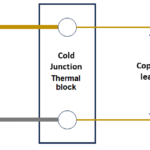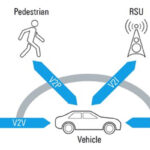by Marty Houlroyd

I feel my age when bringing up the names DataCon and Mupac, back in the 80s and 90s they were the leaders in wire-wrap technology. At that time, I worked for a little no-name company that tried to compete (mostly miserably) against these industry giants.
Some wire-wrap applications, especially telecommunications. used giant surfboard size PCBs, assembled with thousands of wire wrap pins, like a bed of nails, wrapped with various color of 30AWG Kynar wire. Wire-wrap was ideal for making repairable electrical connections without requiring PCB traces. Wire-wrap was the fastest method to prototype an electrical circuit.
I want to say that wire-wrap prototyping went prehistoric once microprocessors achieved 25mhz speeds. But, like any industry proven technology, wire wrap technology will still find applications forever in time.
Out of the “Old Dog learns New Tricks handbook” I would like to present a possible approach to stacking multiple PCBs using 3-Level wire-wrap pins. The illustration shows how 3 PCBs
can be stacked by inserting a long 3-level wire wrap pin through and terminating into
a receptacle rated for .025″ square posts.

Note: Martin can talk to you about other creative methods for creating pluggable PCB modules.







“Wire-wrap was the fastest method to prototype an electrical circuit.”
And still is for some jobs – for example multple 7-segment LED displays with 28-pin driver IC’s. A nightmare to do by most other methods.
I still have a large collection of sockets, Kynar and a very expensive wrapping/unwrapping tool.
I think Vero still do some pins.
Wire wrapping is the ultimate multi-layer method.
The advent of Arduino boards and pluggable shields are an ideal candidate for the pins.